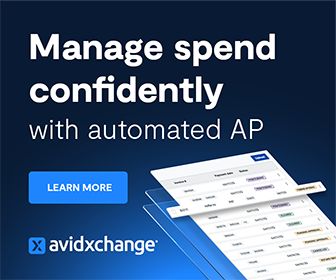In the past few years, the role of the controller has changed. Increased strategy, an increased focus on informing decisions, and a closer relationship with the CFO are among the common trends that have taken place in the past couple years. Knowing this, controllers looking to take on a broader and increasingly strategic role have found themselves more involved in financial planning and analysis.
Understandably, FP&A looks a bit different than normal this year. Unlike years past—focused on continuing the forward momentum—many economists are using terms like V-shaped to determine the forward trajectory. So how are you combining your role in FP&A with an unpredictable recovery model? How will controllers need to take a company-specific approach to industry-specific scenarios? A recent article from the Wall Street Journal looks at some of the plans.
How Far Will You Bounce?
Much of the economy has handled a global shutdown better than you’d expect in such an event, but however you look at it, the United States and world still experienced a significant dip over the past few months. That said, with any dip comes a rebound, and for many controllers, there is reason to start considering your role in a recovery economy.
According to Deloitte, the continued pressure on organizations presented by the pandemic are creating challenges for the finance organization. “The demands of the pandemic, which include the constant need to run scenarios and plan for contingencies while creating new models and rethinking data sources and strategies―all while working remotely―are challenging traditional views of FP&A.”
In planning your next steps, you’re going to need to have a detailed understanding of where you are, what has changed, and how you intend to respond before you even settle into the constant stream of Zoom meetings and discussions you can expect during planning season.
Understanding the Vulnerabilities of Traditional FP&A
Before getting into planning season, you first need to take a second to understand how COVID has impacted the roles and responsibilities that go into managing FP&A—and the weaknesses that a global pandemic has exposed.
“Many prior assumptions and forecasting models—and the data on which they were based—have been rendered moot. As a result, many plans and budgets built on those assumptions and data are now largely unusable, at least for the near term.”
Nearly every model has been thrown into a loop. For example, airlines and hotels flexible pricing models were destroyed when the data said models rely on disappeared. The same will go for your planning models. New customers have popped up, existing ones have left, and you’re now attempting to build around a complete change to the ecosystem.
The New Environment of FP&A
To adapt, companies will need to incorporate the demand for dynamic FP&A processes that can overcome the mess of connections and changes the pandemic has introduced. According to the Wall Street Journal, the following trends will drive change in FP&A, requiring leaders to update plans and activities:
- A sharper focus on modeling the pandemic’s impacts on critical suppliers
- A thirst for raw data and insights from the field, insights from the field, rather than aggregated data
- A higher demand for the integration of external data with company data to generate actionable insights
New Models, New Thought Processes, New Technologies
With a lot of unpredictability, those in the finance department need to rethink the way that they use models and KPIs.
“Given the uncertainties, there is an increased focus on building scenarios and then thinking through their implications for the business. Some FP&A organizations are identifying new drivers of performance and creating new models for forecasting financial outcomes more closely tied to underlying economic and organizational drivers or variables. Others are creating driver-based plans, which may have an inherent advantage over their simpler, trend-based counterparts.”
Additionally, businesses are turning to new data sources and in turn, need new ways to connect and understand this. With some industries finding a boom in the wake of the pandemic and others finally able to start turning an eye toward the future, being able to incorporate these new sources could give an edge when building out a plan.
This, according to Deloitte, will require a renewed focus on technology to manage everything.
Even if FP&A is able to assemble relevant data for ad hoc analyses on desktops, this is too often done by brute force using spreadsheets, which can take an inordinate amount of time. So, the next hurdles are standardizing, systematizing, and operationalizing the data-gathering and analysis process.
Staying Ahead of the Changes
How are you changing your planning processes? How have you had to change your role? We (as well as your fellow controllers) would love to hear from you.
Additional Recovery Resources for Controllers
Six Key Metrics to Track as You Pivot from Lockdown to Recovery (Part 1)
The Role of the Finance Professional in the Midst of a Crisis




